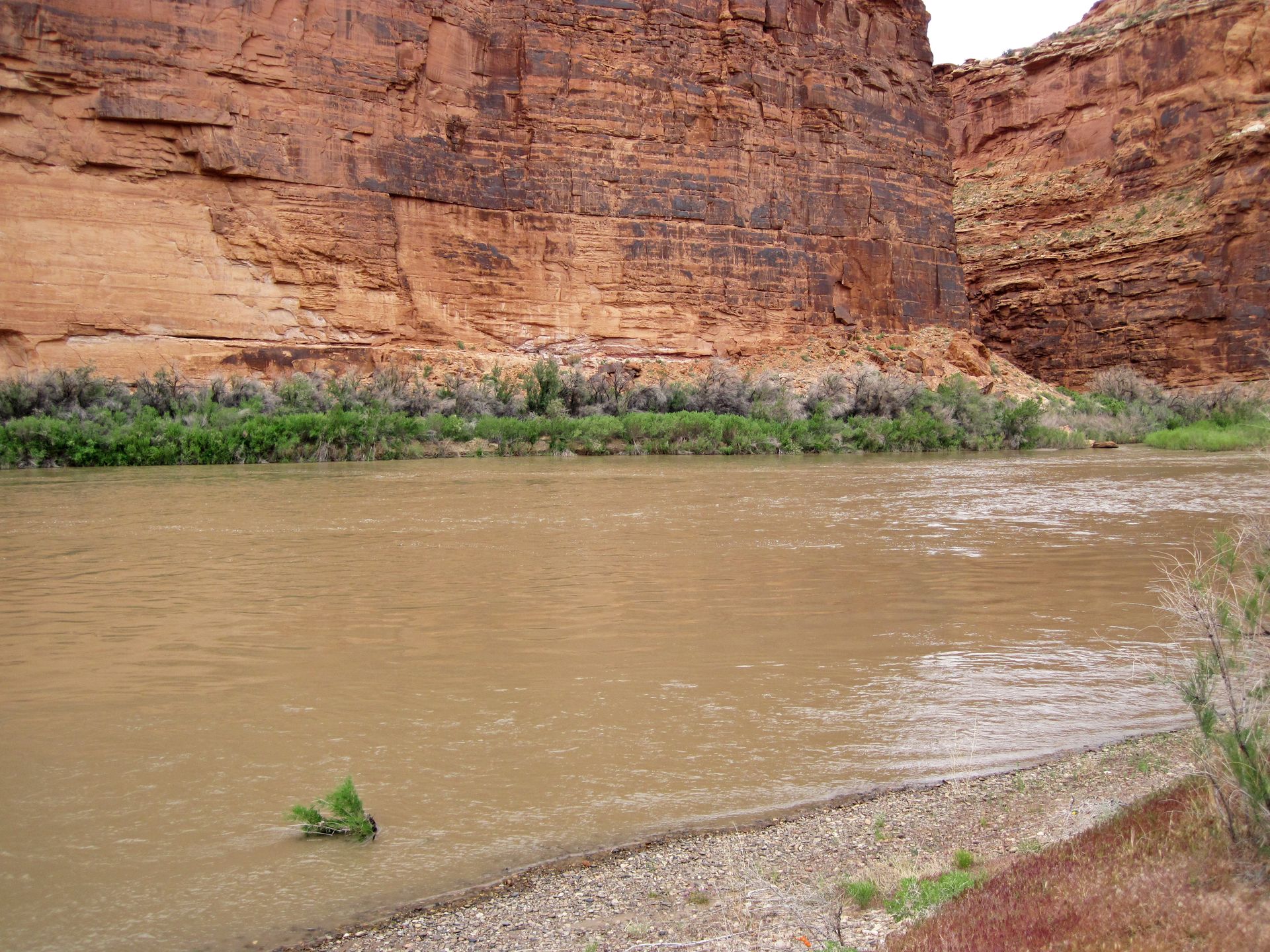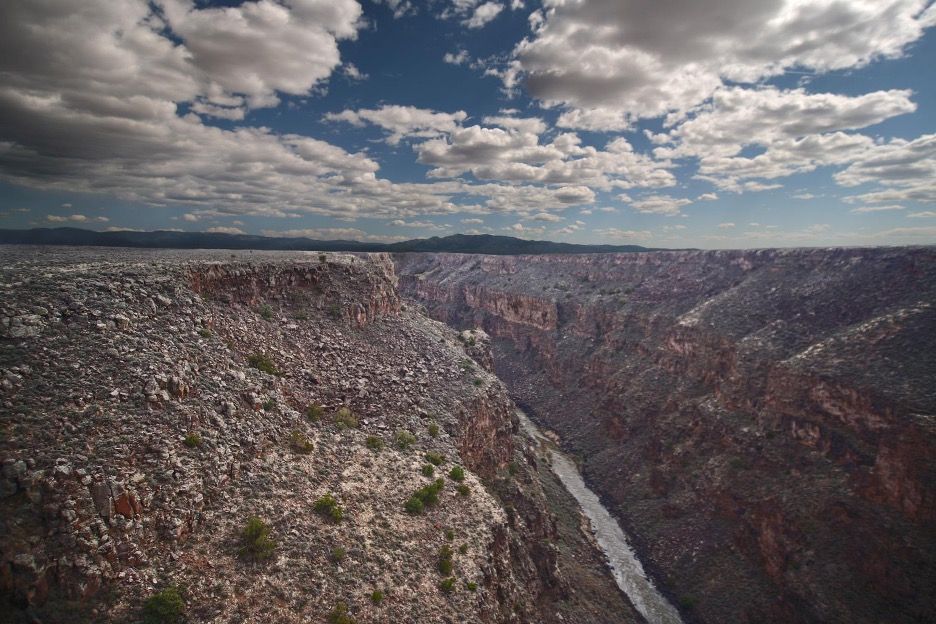In a state where every drop counts, the pressure on Colorado to regulate and maintain a stable water-supply system is intense. Water administrators must constantly be vigilant to ensure there is enough water to meet the needs of the state and to fulfill downstream obligations. As the challenges presented by climate change and increased demand become more visceral, the State will need to start cracking down on something that—on first look—might seem quite innocuous: illegal ponds. However, ponds pose more than a few challenges to make enforcement worthwhile, and the State’s Division of Water Resources (“DWR”) is looking into how they could regulate them efficiently and fairly.
Looking to the future, Colorado’s State Water Plan anticipates a gap between the supply and demand for water in municipalities that get their water from the Arkansas Basin. Staff in the State’s Division of Water Resources has begun mulling whether more strict enforcement of illegal ponds would be helpful in filling this gap. While there are some problems associated with the logistics of the stricter enforcement of ponds, the potential for saving necessary water is there.
According to Assistant Division Engineer for Division 2 Bill Tyner, there are well over 15,000 pond-like structures that do not have decreed water rights or do not fall into another category of legal water storage. Of these 15,000, though, some structures are natural occurring areas, like wetlands, that would not be subject to the water administrative process. Tyner said, “the inventory of unknown ponds consists of approximately 10,000 surface acres” depending on hydrologic conditions and the level of current storage, and “an average rate of evaporation would suggest that the loss to evaporation could be as high as 30,000 acre-feet per year.” The typical pond holds between 0.5 and 1 acre-feet of water.
For context, the State’s 2015 Water Plan predicts the Arkansas River Basin will face a water-demand gap in coming years. The Plan suggests that future needs in the basin, otherwise known as Colorado’s Water Division 2, are expected to increase by 110,000 to 170,000 acre-feet in 2050, while currently planned projects in the Basin leave a supply gap of between 45,000 and 94,000 acre-feet for the same period.
Sustained gaps in water supply pose a risk to Division 2 and to the State as a whole. Colorado’s water sources must supply the State’s municipalities, agriculture, and industry but still comply with any interstate compacts, such as the Arkansas River Compact executed between Kansas and Colorado. Failure to comply with the Compact has previously resulted in Colorado paying millions of dollars of damages to Kansas.
One way to help fill the gap in Division 2 might be for regulators in the State Engineer’s Office to crack down on the large number of illegal ponds peppering the Basin. But closing the gap in Division 2 is not something that DWR is tasked with. While illegal pond enforcement could potentially help close the gap, DWR's priority is fulfilling their duty to administer water rights regardless of any effect on a predicted gap. As Tyner explained, "[DWR] has been given no direction to find water to fill the gap, certainly not through enforcement actions, and discussing enforcement in the context of the water supply gap could lead to the wrong conclusion. . . . [W]e actively seek opportunities to discourage and prevent new un-exempted and un-augmented ponds from being developed.”
Tyner also cautioned against linking the potential savings from pond enforcement to the size of the gap too closely: any comparison between the two, he said, is really just to highlight the scope of the problem. "Our past comparisons relating to the amount of water evaporating from the ponds or stored out-of-priority may indeed show an amount that could be as much as the Arkansas basin gap, however that contrast of data was intended to demonstrate the magnitude of the losses from ponds, not to suggest a solution to the demand gap," he added.
This article will address first, the current enforcement process; next, the complications involved with the current process; and finally, a new approach to pond enforcement that could take effect in the near future.
Current Enforcement
So far, Division 2 has had some success working with the owners of ponds who, usually without knowledge that what they are doing is illegal, are diverting water out of priority. Typically, when the Division locates a pond that is diverting water out of priority, an enforcement order informs the pond owners that a change must be made. This could mean draining the illegal pond or halting diversions from a nearby water source.
During drought years, the Division typically receives complaints from senior water rights holders who know they are losing water to ponds belonging to residents who don’t have water rights or who are junior in time. The Division then notifies the owners of the ponds, explaining they either need to apply for an augmentation plan or stop diverting water to their pond. Tyner said that once notified, pond owners usually comply with any enforcement orders. If successful enforcement like this were to become more frequent, the closure of more illegal ponds could aid Division 2 in obtaining more water to solve the projected gap and to help comply with the Arkansas River Compact.
When there is a gap in water supply, one place to look for more water are wells that are pumping out of priority. Before the 1969 Act, which codified Colorado’s system of prior appropriation, there were no requirements for wells to be adjudicated in the priority system. Now, the state recognizes two classes of wells: those that are exempt from the water rights administration and those that are non-exempt and are governed by the priority system. Regulation of non-exempt wells ensures senior water rights holders are getting the water they are entitled to. But according to Tyner, unintended consequences arise from state exemption statutes. Tyner said there are tens of thousands of exempt wells that statute treats as not having an impact on the priority system, even though they may. In more recent water court cases, the state has cracked down on exempt wells in recognition of their effect on the priority system, like in Well Augmentation Subdistrict of Central. Colorado Water Conservancy District v. City of Aurora. Tyner said that there is no strong emphasis on closing ponds like there is on closing wells.
Under Colorado law, storing water in a pond requires a storage right unless the pond is included in a plan for augmentation or substitute water supply plan (But even then, Tyner said owners are encouraged to obtain a storage right). One exception to the storage right requirement is when the Division Engineer determines that no senior call exists below the pond; however, this has only happened a few times in the last thirty years. Another exception is when, as determined by the Water Commissioner and the Division Engineer, the curtailment of the storage would not serve to fulfill a downstream call. So, unless a pond has a storage right (or is part of an augmentation plan) or there is an exception, the Division Engineer can curtail use of the pond. The problem, however, is the large number of small ponds dotting the Basin, making enforcement complicated.
One uncertainty, according to Bill Tyner, is how much water is actually lost to these rogue ponds. In some ways, this uncertainty provides an advantage for Colorado because Kansas, for example, would have a tough time arguing that ponds are an issue under the Arkansas River Compact simply because ponds do not have as strong of ties to the system as say wells—although wells used to be less strictly enforced as well. But it is clear to Tyner that ponds are diminishing the supply in some way.
Enforcement Complications
Why haven’t enforcement orders been issued to every illegal pond in hopes of saving Division 2 as much water as possible? The idea is not as simple as it may sound.
First, locating illegal ponds is difficult. While Division 2 contains some populous cities like Pueblo and Colorado Springs, it also comprises a lot of rural area. Tyner said water commissioners can use aerial photos to identify ponds, but typically enforcement orders arise as responses to specific injury concerns from senior water right holders. When a senior water right holder makes a call on the river, junior water right holders must stop diverting water from the system. When pond owners are unaware that they are continuing to divert water out of priority, this still injures those senior right holders. Also, there are various ponds that have legitimate reasons to exist and are in compliance with the Division of Water Resources. Some examples of these types of ponds are livestock water storage ponds and exposed gravel pit ponds, both of which may be permitted by the State Engineer. This makes it difficult to determine which ponds are noncompliant unless there has been a specific complaint.
Second, increased enforcement of ponds would require more Division staff and resources focused on this issue. Tyner said the Division has not made pond enforcement a high enough priority yet, but he previously saw the Division “staff up” when Kansas sued the state under the Arkansas River Compact. The Compact was made in 1948 to settle disputes over the waters of the Arkansas River, which runs through both Kansas and Colorado. In the past, when Kansas sued Colorado for failing to provide enough water under the Compact, the Division of Water Resources was forced to administer more personnel to enforce post-Compact wells under the threat of paying damages. If Kansas sues Colorado again, a similar “staff up” for pond enforcement could be required.
Additional factors complicating pond enforcement include the time it takes to ensure property owners remove illegal ponds, as well as the hardship enforcement might have on the pond owners themselves. Tyner said when the water commissioner first contacts the owners of illegal ponds, the owners are often surprised and unsure what to do. Considering the complicated nature of Colorado water law, the commissioner gives owners a few months to comply with enforcement orders.
Remedies vary depending on whether the pond is “on-channel” or “off-channel.” An on-channel pond is one that a natural stream runs through. If a pond owner is storing water out-of-priority or they do not have a storage right, the owner may be asked to release any water stored in their on-channel pond. This may require the dam for the pond to be breached. An off-channel pond diverts water from the stream. The remedy for illegal off-channel ponds is the cessation of all diversions to the pond. Pond owners can request an extension of time to comply with the enforcement order, which the Division typically grants. Tyner said in very few situations do people refuse to comply with the order; and in even fewer instances, a fine is imposed. On the rare occasions owners simply refuse to comply with the Division’s requests, the Attorney General's Office must file a complaint on behalf of the Division Engineers with the court. Most owners who initially refuse to comply end up signing a Consent Decree that identifies how they will comply with the order and by what date. Tyner said if the Division gets to this point, the owner must pay penalties.
Ultimately, given the time and resources needed, it is unrealistic to expect that a swift wave of enforcement against illegal ponds will have an immediate impact on the water system. At the same time, any solution should be considered given that Colorado will face continue to face challenges in complying with the Arkansas River Compact. In 2005, Colorado paid Kansas more than $34 million in damages for Compact violations caused by years of well pumping that depleted river flows at the state line—a situation that no one would like to see repeated.
"Although enforcement is not a tool intended to close the gap, we recognize that additional out-of-priority uses, particularly in an over appropriated basin, only make it more difficult to protect existing senior water rights and address legitimate future needs and so, through education and interdiction we actively seek opportunities to discourage and prevent new un-exempted and un-augmented ponds from being developed," Tyner said.
Proposed New Approach
In preparation for the September Orders Committee Meeting, Tyner drafted a memo to the Division of Water Resources Orders Committee in April 2018. In the memo, Tyner proposed a new approach to pond enforcement orders. The approach embraces a strict timeline for the emptying of ponds, as well as strict conditions for the refilling of ponds with approved augmentation plans. The harsher approach comes with time saving benefits for the water commissioner, and it seeks to rid of interim compliance problems when ponds are lowered properly but later refilled by rain.
Tyner’s memo explained that “it takes and inordinate amount of time to make monthly site visits to confirm compliance or non-compliance with the orders.” The memo outlined an improved process for pond enforcement. Tyner suggested that the Division first order an owner to remove unnecessary obstruction by breaching the dam or, if the pond has adequate operable outlet works, by releasing stored water. Tyner’s memo said orders should include “a show cause statement as to why the water in the pond has been legally stored and, if water can be shown to be legally stored, show how inflows will be passed to prevent injury to downstream water rights when in-priority storage cannot be conducted.”
The ideas Tyner suggested also include orders that refer pond owners to dam safety requirements and orders that identify a timeframe for owners to comply with in emptying their ponds. For dam safety, breaching or draining of off-channel ponds should contain a reference to dam safety provisions to avoid “a train wreck” with water being discharged to the stream. And for timeframes, Tyner suggested that for orders issued after September 1, compliance be met by the following April 1; and for orders issued after February 1 and before September 1, he recommended that the owner be required to empty the pond within 45-60 days from receipt of order.
Then, an order should apprise the owner of options for obtaining a substitute water supply plan or an augmentation plan for their pond to be refilled. According to Tyner, this should not be given as an option for compliance with the order, but “if someone was able to get approval for a plan over the winter with a provision to handle the initial fill, [the Division] could treat that as compliance with the order.” Further, any substitute water supply plan or augmentation plan approved for refill and fill maintenance on a pond should have strict conditions about operable outlet works.
For off-channel ponds, an order should be issued in a similar manner; however, the diversion to the pond should be immediately curtailed. The same considerations in any substitute water supply plan approval should be considered similarly to on-channel ponds, but with added conditions related to proper control and measuring devices on the diverted supply to the pond to allow control by the Water Commissioner.
This approach has the potential to simplify the process of pond enforcement, which could aid Division 2 in gaining more water. But even if this approach helps save more water, according to Tyner, “making water available through pond enforcement may not result in water being available at a proper location to solve the problem.” Also, “some landowners with ponds will choose to try to keep their ponds by working to develop augmentation plans to replace out-of-priority depletions”, so figuring out the overall impact of a new enforcement plan would “be a dynamic process” for DWR, Tyner said.
While dealing with illegal ponds is not easy, there is potential for Colorado to save a lot of water through stricter enforcement. Much like the way the state revamped its system to regulate wells to comply with the Arkansas River Compact, a stricter regulation of illegal ponds could prove very beneficial to the state.
Sources
Arkansas River Compact of 1949, Colo. Rev. Stat. Ann. § 37-69-101.
Bill Vogrin, A pond farewell: State cracks down on water rights violations, Gazette (Sept. 4, 2009) http://gazette.com/a-pond-farewell-state-cracks-down-on-water-rights-violations/article/61473.
Citizen’s Guide to Colorado’s Interstate Compacts, Colorado Foundation for Water Education Colorado 16-17 (2nd ed. 2016), https://agriculture.ks.gov/docs/default-source/iwi---kansas-colorado-arkansas-river-compact/arkcompactfactsheetaug2009.pdf?sfvrsn=2.
Colorado Water Plan 6-21 (2015), http://cwcbweblink.state.co.us/WebLink/ElectronicFile.aspx?docid=199504&searchid=80d50cb3-95bf-405c-bfa5-587c633c7136&&dbid=0.
Guide to Colorado Well Permits, Water Rights, and Water Administration, State of Colorado Department of Natural Resources Division of Water Resources 2 (Sept. 2012), https://www.colorado.gov/pacific/sites/default/files/wellpermitguide1.pdf.
Telephone Interview with Bill Tyner, Assistant Division Engineer for Division 2, Colorado Division of Water Resources (Feb. 22, 2018).
Email correspondence with Bill Tyner, Assistant Division Engineer for Division 2, Colorado Division of Water Resources (Apr. 22, 2018).
Kansas Department of Agriculture, Fact Sheet (Aug. 2009), https://agriculture.ks.gov/docs/default-source/iwi---kansas-colorado-arkansas-river-compact/arkcompactfactsheetaug2009.pdf?sfvrsn=2.



